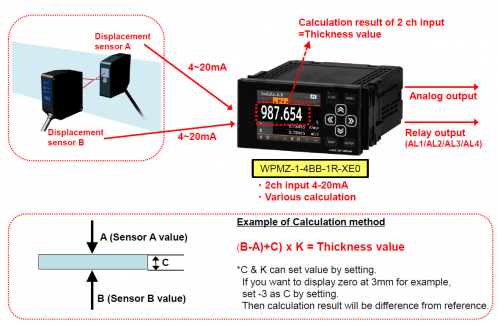The manufacturing industries are gearing up again after a period of a significant downturn. To support the increasing product demands and the economic recovery post-pandemic, manufacturers need to think of methods to streamline their manufacturing and production process efficiently, while still maintaining the quality of the products they manufacture.
In the production of building materials, such as plasterboard, manufacturers employ techniques to ensure that the manufactured board meets the required specifications, such as thickness, edge angle and size. Plasterboard is a panel made from gypsum, generally used to make interior walls and ceilings. It is essentials to ensure that the thickness of the board meets the required specifications to ensure that it provides adequate noise insulation.
The increasing availability of sensors and high precision measurement systems has given manufacturers abundant technological options to design and develop their inline inspection systems for production control. Traditionally, the thickness of the board can always be measured manually with a thickness gauge. However, this technique does not give much flexibility to the operators to control the operating parameters and also heavily relies on the operator to conduct the measurement and collect the data. Optical, non-contact sensors would be a much-preferred option, however, the sensors will need to be able to provide stable measurement signals in an industrial production environment and they should not interrupt the existing process.
Non-contact single-point laser displacement sensors have been popularly used for thickness measurement applications. They operate based on the laser triangulation principle to provide a measurement of distance, displacement and position with high precision and accuracy. Generally, optical laser displacement sensors need to be able to adjust their exposure time to compensate for the changing intensity of reflected light, especially during the measurement in the production line or rapidly changing surfaces.
Inline Thickness Measurement Technology
We will be discussing the possibility of implementing laser triangulation sensors for automated measurement of plasterboard thickness in the production line. To start with, these non-contact displacement sensors have a compact design and offer various types of output signals to communicate with various industrial interfaces for easy integration. The proposed thickness measurement systems will consist of at least two laser triangulation sensors. The two sensors are to be mounted at the exact position at the opposite ends of each other. The system is illustrated in the diagram below.
Ideally, the board thickness can be calculated using the formula below.
Thickness (C) = H – (B+A), where
C = Board Thickness
B = Measurement from Laser Sensor B
A = Measurement from Laser Sensor A
H = Distance between Sensor B and Sensor A
It looks simple and easy to implement. However, the users need to ensure that both laser sensors are time-synchronized such that they are taking the measurement at the same time. This is important because time deviation results in erroneous data used for calculation as the measurements are not taken from the same reference point. Data analysis can be done in the control room or in the monitoring software. What if the operators need to quickly see the results in the production line? There needs to be a solution to allow the display of the results without them having to contact the control room.
A digital display panel meter has been widely used in the process plant and in the production environment. For this requirement, the manufacturers can engineer the system using a digital panel meter that offers features such as arithmetic calculation of two sensors input or signal comparisons. The panel meter can be programmed with the equation above to calculate the thickness based on the input from the two sensors. Refer to the diagram below for the calculation method using the feature from the WPMZ panel meter.
The value of C can be set depending on the users’ preference. For example, if the user would like to display the exact result of board thickness, the C constant could be set at 0. The results from the sensors can also be transmitted via relay output to alarm the operators when the deviation exceeds the tolerated limit.
Apart from measuring the thickness of the plasterboard, plasterboard manufacturers may also be interested in monitoring the edge angle of the products they manufacture. This is to ensure that the manufactured boards can easily be fitted and installed without any gaps. This can be done with laser line profile sensors or any type of profile scanning system that can measure 2D and 3D profiles of an object. Ideally, the raw profile data can be used to calculate the profile properties such as groove and angles, which can be done automatically by the sensor or in the post-processing software.
Not only for plasterboard but this technique can also be used for almost any thickness measurement applications as long as the objects can be detected by the sensors. For more information, please contact us to speak with one of our engineers and specialists to discuss your measuring requirement. Please visit the below pages for technical information on the products related to the thickness measurement of plasterboard.



